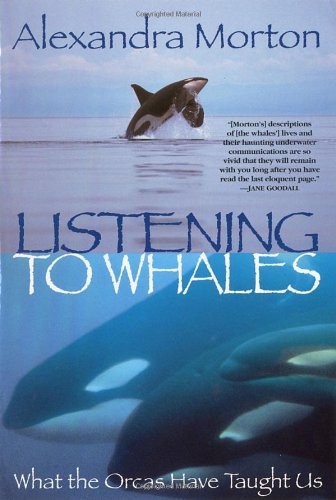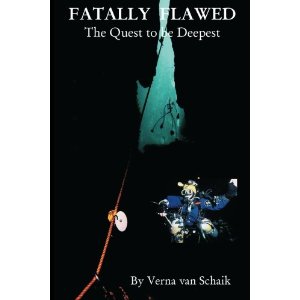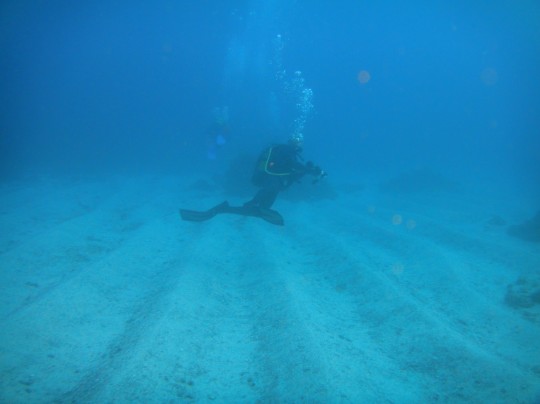Category: Solo diving
Bookshelf: Listening to Whales
Listening to Whales: What the Orcas have Taught Us – Alexandra Morton

Listening to Whales is marine biologist Alexandra Hubbard’s memoir of the thirty-odd years she spent studying wild killer whales, as well as other cetacean species. Morton was born in the United States, the daughter of a famous artist, but discovered her passion for cetaceans while working for eccentric dolphin researcher John C. Lilly. Her orca research took her into Canada’s remote Broughton Archipelago, where she and her husband (who passed away during the research in a solo rebreather diving accident) lived a romantic, itinerant, lonely, and very challenging life following pods of wild orca around and studying their communication.
Morton also spent time in oceanariums and theme parks, observing and working with captive orcas and dolphins. Her insights into the trauma that these unnatural environments inflict on the animals held there are illuminating, and dovetail with the observations made in articles such as The Killer in the Pool and Blood in the Water, and Death at Seaworld.
When the orcas disappeared from British Colombia’s remote waters, Morton wanted to find out why. She soon discovered the reason for their absence: there was a growing number of salmon farms, which started proliferating in earnest in the late 1980s, in the archipelago. The salmon farms used Acoustic Harassment Devices (AHDs) to chase away seals that preyed on the captive salmon. Since sound is of vital importance to orcas for hunting, echo location, and communication, the whales found the noisy environment unliveable and intolerable, and left the area. Morton’s persistence (she wrote over 10,000 letters) led to the withdrawal of the AHDs starting in the early 2000s.
The salmon farms have affected the area in ways other than noise pollution. They generate massive amounts of physical pollutants (from excess food pellets, waste products, and antibiotics used to treat the farmed fish), reducing the water quality. The salmon are also prone to infestation by parasites. Because the farmed fish are kept in such close quarters, there is unchecked spread of diseases and this can spill over to wild populations. There are also potentially serious consequences if farmed salmon escape and breed with wild salmon populations. The fish farming industry is growing rapidly in both size and vogue, and there is massive financial incentive for companies (and government bodies) to cover up the shortcomings and failures of mariculture. Morton’s work uncovering the abuses occurring in Canadian (and other) salmon farming continues to this day. She is a hero.
I think that if I’d had more access to women who were working as scientists when I was a child, my career might have panned out a little differently from the way it has. This is why I am very enthusiastic to discover memoirs by women who are respected in their chosen field, particularly when pursuing that particular field of study would seem to preclude some of the things that some people want, such as a stable family life. Whale scientist Elin Kelsey’s book Watching Giants also falls into this category. Morton’s life story is one of a wandering, resourceful, curious person who has managed to combine significant scientific output with a fulfilling life that has included raising two children, one of whom now works at NASA. Part of her son’s childhood was spent curled up in the bow of the Zodiac his parents were using to track pods of orca!
I’d strongly recommend this book to girls considering a career in the natural sciences, and to anyone else who is interested in the ocean, killer whales, fish farming, or just in interesting lives well lived. You can get a copy here or here.
Bookshelf: Fatally Flawed
Fatally Flawed: The Quest to be Deepest – Verna van Schaik

Verna van Schaik holds the record for the deepest dive on scuba by a woman, to 221 metres in a water-filled cave called Boesmansgat in the Northern Cape. If the name Boesmansgat rings bells, it’s probably because you heard about it as the cave that claimed the lives of Deon Dreyer in 1994, and, more recently, the Australian diver Dave Shaw, who went to recover Deon’s body. The story of that mission is recounted in Raising the Dead (also called Diving into Darkness).
Verna van Schaik was present on the day when Dave Shaw died – she had a critical support role as the person managing all the divers from the surface. She describes her emotions and how difficult it was to know what to do in the situation that arose. Her account of the build-up to Shaw’s dive, the actual unravelling of events, and the aftermath, is fascinating when read in conjunction with Raising the Dead, because she was actually on the team, whereas the other book is written with the apparent objectivity of a third party. Van Schaik criticises Dave Shaw and Don Shirley for going ahead with the dive – she says that they hadn’t slept enough, and that there had been several critical equipment failures the night prior to the dive which made it a desperately risky undertaking.
The book traces her career as a female deep diver. It includes her struggles to be accepted in this very male-dominated sport, her struggle to find and keep a trusted dive buddy, and numerous descriptions of the difficulty of managing a team of divers engaged in high-risk record-seeking endeavours.
She describes the fear she has felt on some of her record-setting dives, and the experience of becoming entangled in her line while at the bottom of a cave, all alone. Very deep dives are of necessity solo dives – there simply aren’t enough people who can and want to dive that deep for buddying up to be an option, and when every single small decision is a choice between life and death, having a buddy can be more of a liability than a help.
Van Schaik does, however, stress that very deep dives require a team of support divers who meet the deep diver on his or her way up from the deepest point. She prefers continuous support (never leaving the deep diver alone during the long decompression) but Shaw and Shirley, for example, planned for divers to be with them only for ten minutes of every hour.
It’s a quick read, could have done with a spell-check, but, especially if you’re familiar with the Dave Shaw story, I recommend it.
I actually read this book on my iPad using the Kindle app and you can get a Kindle copy here, but you can get a hard copy of the book here. As an aside, I found Verna’s old blog, here. It’s an interesting read!
Solo diving
There has raged a heated debate for a long time on the merits and dangers of solo diving. Solo diving is the as the title suggests, diving alone, no buddy, no surface support (if boat diving) and most likely no one waiting on the beach.

Very little solo diving takes place in a resort environment, primarily because they want a full boat before they launch. It’s not a common practice, most resort environments have heavy boat traffic as there are often many operators diving the same dive sites, these skippers look for a buoy close to a boat (the boats follow a surface buoy towed by the dive master), and skippers don’t really want divers scattered all over the ocean as it is hard to keep track of them. If the resort you are diving with has an anchored boat it is easier to do a solo dive especially if you loose the group as there is seldom a dive master thats going to come looking for you. You may be lucky to find a skipper that will drop you off separately from the group, but it is rare.
Cape Town is a little different. It is often a case where someone on the boat is doing a mapping project, or some research or looking for a specific feature underwater so solo diving happens. The skipper and sometimes other members of the group know you are down there but not where.
If you want to maximise the number of photos you get on a dive or get some good video footage then solo diving makes this easier. Not having a buddy means you do not need to check up on them, you do not need to periodically look for them and you wont have them yanking on your fin to show you something cool just as you are about to get that ”shot”. By the same token there is then no one looking for you, checking up on you and no one for you to signal ”out of air” for example.
If you are going to go solo diving start small, somewhere where the beach is close, the weather is good and someone knows where you are, how long you plan to dive and what your route will be. It is for some an intimidating experience and your comfort level takes a while to increase.
Once you decide to try solo diving be brutally honest with yourself: do you trust yourself, your equipment and your ability to think rationally in a stressful situation? If not, don’t try it.
If you are okay with all of these aspects make sure you have the right gear. Split your weights over a weight belt and integrated weights. You’ll need a knife, a compass, a dive computer, decent gloves, a hoodie and all the rest to ensure you don’t get cold, tired, uncomfortable or lost. Be sure you know when to turn the dive if you are swimming out somewhere and returning to the same spot. Ensure you plan and monitor your air consumption, checking more often because just knowing you are ”good on air” won’t help you if you have a leak on your first stage that no one tells you about… There is no one there remember. (If you think you have a leak, you can roll onto your back and look up and between breaths you will be able to see if you do.)
Plan your dive and dive your plan.







